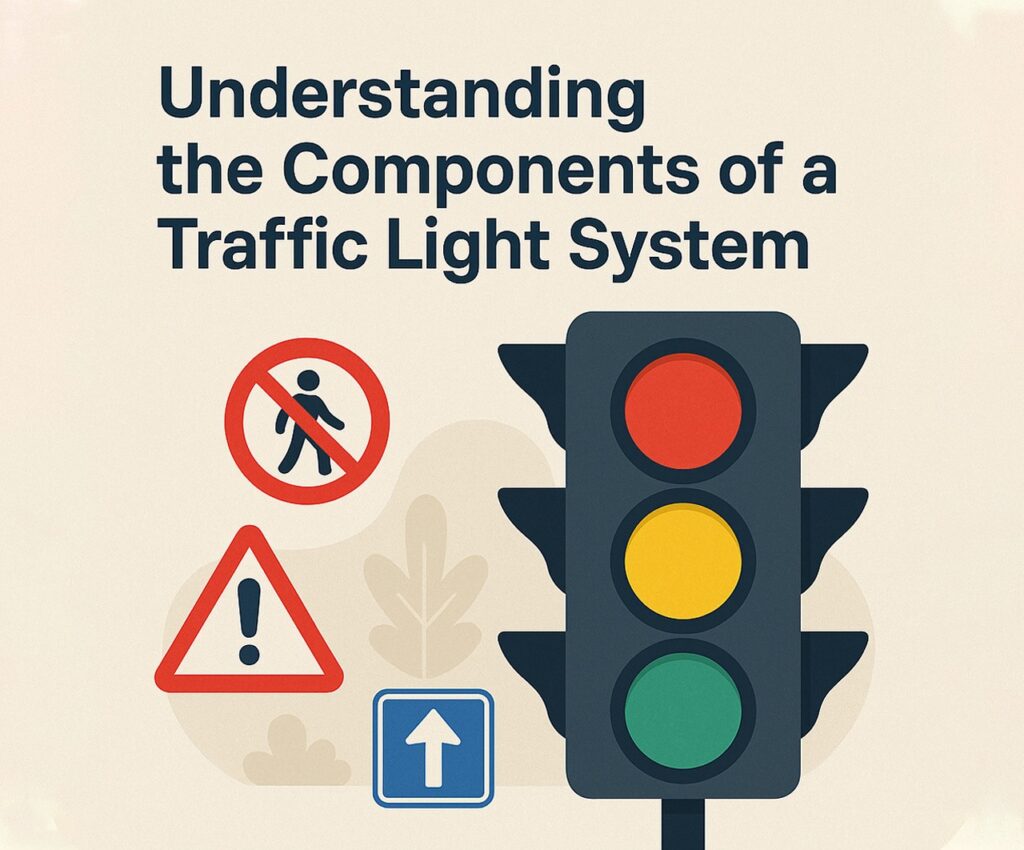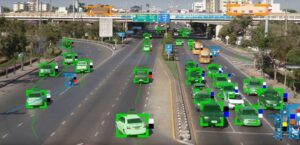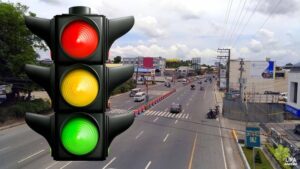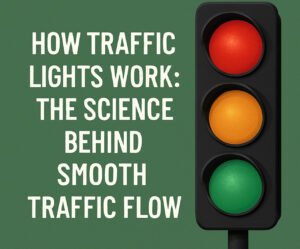In today’s increasingly connected cities, managing traffic efficiently is more important than ever. Central to that efficiency is a well-designed traffic light control system, the backbone of modern traffic light systems. As urban areas embrace innovation, we’re seeing a rapid shift toward the smart traffic light control system, a more intelligent and adaptable version of the traditional setup. To truly understand how these systems operate, it’s important to break down their key components and explore how they work together to manage flow, reduce congestion, and enhance safety. Know more..
1. Signal Heads: The Visible Command
The signal head is the most recognizable component of any traffic light systems—the iconic red, yellow, and green lights. But there’s more to them than meets the eye. Each signal head houses:
- Lenses: Colored lenses (usually LED now) for visibility.
- Visors: Shield lights from sun glare.
- Backplates: Increase contrast and help drivers spot signals faster.
In a smart traffic light control system, signal heads may also contain sensors and communication hardware that allow them to receive data and respond dynamically. For instance, lights can turn green earlier during low-traffic hours or extend red signals when crosswalks are in use.
2. Traffic Signal Controller: The Brain of the Operation
Every traffic light control system needs a controller. This unit acts as the brain of the setup, executing pre-programmed signal sequences or, in advanced cases, adjusting signals in real time based on traffic conditions.
Traditional controllers use fixed-time schedules, but in smart traffic light control system setups, controllers are AI-enhanced and adaptive. They can analyze data from sensors, cameras, and connected vehicles to make decisions on-the-fly.
Modern controllers can manage:
- Signal phasing and timing
- Pedestrian crossings
- Emergency vehicle prioritization
- Public transportation scheduling
This adaptability is crucial in high-density environments where traffic can change dramatically within minutes.
3. Detectors and Sensors: Eyes on the Road
A traffic light control system is only as smart as the data it receives. That’s where sensors come in. These components detect the presence of vehicles, bicycles, and pedestrians, feeding real-time information back to the controller.
Types of detectors include:
- Inductive Loop Sensors: Embedded in the pavement to detect metal.
- Infrared Sensors: Use heat signatures to detect people and vehicles.
- Video Cameras: Monitor flow and feed into analytic software.
- Radar and Microwave Detectors: Ideal for long-range vehicle detection.
A smart traffic light control system integrates multiple sensor types for better accuracy. For example, combining radar with video analytics can help distinguish between a pedestrian crossing and a cyclist waiting to turn.
4. Communication Systems: The Network Layer
No traffic light systems can operate intelligently without seamless communication. In traditional systems, signals run on local timers. In smarter networks, intersections talk to each other and to central management centers.
Key communication technologies include:
- Fiber Optic Cables: For fast, high-volume data transfer.
- Wireless Networks: Useful in remote or temporary setups.
- 5G and IoT Protocols: Enable real-time updates and cloud integration.
With a smart traffic light control system, communication extends beyond infrastructure. Vehicles equipped with Vehicle-to-Infrastructure (V2I) tech can receive signal data directly, making intersections more predictable and reducing accidents.
5. Power Supply and Backup Systems
Even the smartest traffic light control system is useless without power. That’s why reliable and resilient energy solutions are essential. Most systems run on municipal electricity but include:
- Battery Backups: Maintain signal operation during short outages.
- Solar Panels: Provide renewable power, especially in rural or off-grid locations.
- UPS (Uninterruptible Power Supplies): Protect against voltage spikes and outages.
For traffic light systems installed in high-risk zones, power stability is critical. In emergencies or disasters, uninterrupted traffic control helps coordinate evacuation routes and maintain order.
6. Pedestrian and Cyclist Interfaces
Inclusion is key in the design of a smart traffic light control system. Pedestrian buttons, audible signals, countdown timers, and tactile paving are all standard features. Newer systems incorporate:
- Touchless Activation: For hygiene and accessibility.
- App-Based Requests: Allow users to signal their presence via smartphone.
- Adaptive Crosswalks: Adjust time based on real pedestrian flow.
These interfaces ensure that everyone—not just drivers—benefits from smart traffic light systems.
7. Centralized Management Software
Behind every network of traffic light systems is a robust software platform. These centralized dashboards allow traffic engineers to:
- Monitor real-time flow
- Adjust signal timings remotely
- Receive alerts for maintenance needs
- Analyze historical data for planning
In a smart traffic light control system, this software uses AI and machine learning to detect patterns and anticipate congestion. It can reroute traffic, synchronize corridors, and respond to emergencies—all without human intervention.
8. Integration with Public and Emergency Services
A truly effective traffic light control system must support integration with:
- Public Transport: Give priority to buses and trams.
- Emergency Vehicles: Change signals to green as ambulances or fire trucks approach.
- Construction Zones: Adjust flow based on temporary disruptions.
By syncing these systems, cities can ensure smoother, safer movement for all users. For example, a smart traffic light control system can identify an approaching firetruck and clear its path block by block—reducing response times significantly.
9. Safety Features and Fail-Safes
Safety is at the core of any traffic light control system. Built-in redundancies and fail-safes are designed to prevent accidents during malfunctions.
These may include:
- Automatic default to flashing red (stop) in case of failure
- Real-time alerts to city control centers
- Emergency manual overrides
A smart traffic light control system enhances this with predictive analytics. It can flag patterns of erratic vehicle movement, detect hardware anomalies, and trigger preventive maintenance before anything fails.
Real-World Example: Smart Systems in Action
Take the city of Amsterdam, for example. Their smart traffic light control system uses cloud-based coordination across over 800 intersections. The result? Commute times are down 15%, emissions are reduced, and pedestrian injuries have decreased significantly.
Meanwhile, Los Angeles has implemented one of the largest synchronized traffic light control system networks in the world, improving traffic speed by 16% and reducing idle time dramatically. These systems work because they combine all the elements discussed above into one responsive ecosystem.
Conclusion: The Future is Modular and Intelligent
Understanding each piece of the puzzle—the signal heads, controllers, sensors, communication networks, and software—shows us just how advanced today’s traffic light systems have become. Gone are the days of fixed timers and isolated intersections. The smart traffic light control system is the future: modular, adaptive, and built to handle the complexities of 21st-century urban life.
By embracing these components, cities can not only move traffic more efficiently but also improve safety, reduce environmental impact, and create a more inclusive, technologically advanced transportation experience for everyone on the road.





